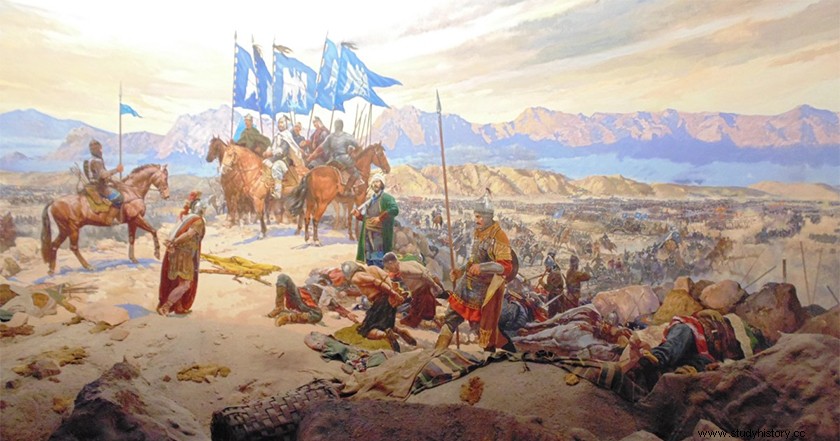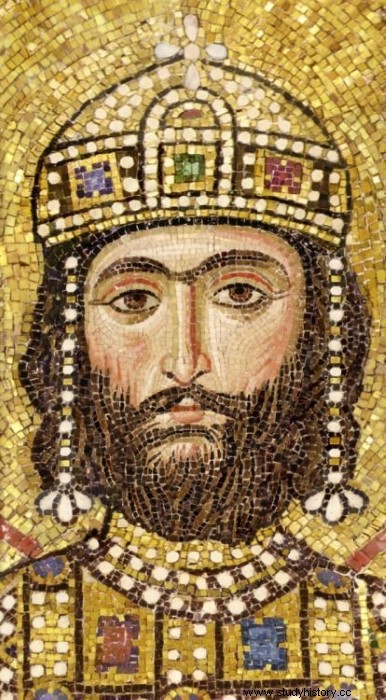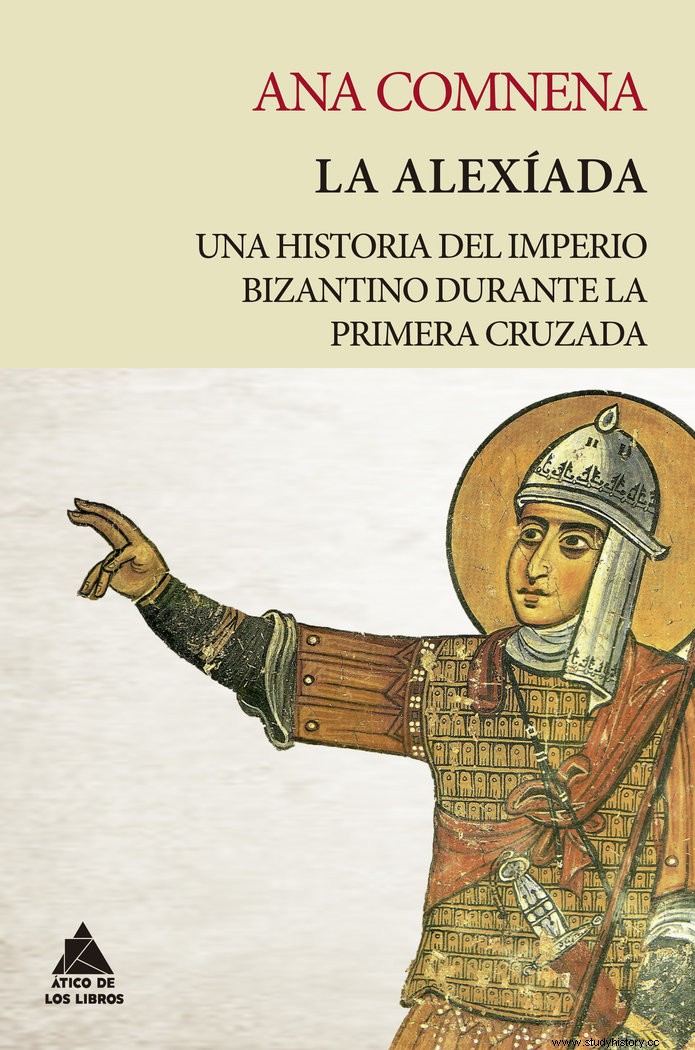
Alp Arslan cover image, turned into Turkey as a kind of medieval hero for his victory at Mantzikert
At the end of the 11th century, in what we know today as Turkey, a series of events would profoundly change the rich history of the Anatolian Peninsula. A land that saw the birth of the world's first cultures, and where for the first time humans decided to establish religions. Assyrians, Hittites, Medes, Persians, Greeks and Romans passed through there. A land that in the last quarter of the 11th century changed from being Christian to being Muslim, a fact that caused, after the Byzantine defeat at Mantzikert, the arrival of the Crusader armies.
The Battle of Mantzikert.
The story can be started on the plain in front of the city of Mantzikert, on August 26, 1071. There thousands of combatants left their lives under the eternal gaze of Mount Ararat. Two months before the Byzantine troops, which also included Turkish and Norman mercenaries, had left Constantinople to recover the lost square. It shouldn't have cost them much. The siege began in late July, and in the face of Byzantine might, the new Seljuk rulers of the city fled after the rapid capture of the city by the Christians.
The news flew in the direction of Syria where Turkish leader Alp Arslan was staying. . In a few days he was already meeting in Mosul with the escapees from Mantzikert, among them the qadi of the city, the new political and religious leader of the same. Alp Arslan then begins to recruit soldiers, at the same time heading north.

Battle of Mantzikert
That morning, according to the chronicles, the heat was suffocating. After a sleepless night, due to falling Seljuq arrows, the Byzantine cataphracts set off. The first clash with the Turkish cavalry evidently worked in their favor, the Turks began to flee. At that moment, the Byzantine emperor who led the fight, Romano IV, makes his umpteenth mistake. After sending the heavy cataphracts to chase the light Turkish horsemen, they ended up exhausted and dehydrated, becoming fodder for rival arrows. The Norman auxiliary troops evade the clash, while half of the Byzantine army leaves the battlefield, the betrayal of Andronicus Ducas was served . The massacre was total, Romano IV ended up imprisoned in the Alp Arslan dependencies.
Who were the Seljuk Turks?
The victors of Mantzikert were heirs to the nomadic peoples who lived in Central Asia, specifically around the Aral Sea, bordering the Abbasid Caliphate. Some towns that were Islamized by commercial contact, and especially as mercenaries of the caliphal armies. These peoples were promoting their own political structures, so the first kings soon emerged.
The first known is Selyuk , which will end up giving the dynasty its name. A few decades before Mantzikert, the Seljuks defeated the Gaznavi sultans, proclaiming themselves governors of the Khurasan area. His heirs were conquering territories, among them the second king Turgul Beg , son of the previous one, and the protagonist of Mantzikert Alp Arslan , nephew of Turgul.

Seljuk Army
Alp Arslan did not have a very long reign, little could he savor Mantzikert's victory, only a year later he met his death trying to conquer Turkestan. His death would elevate Malik Shah to the post of sultan, which he would appoint Nizam al-Mulk as vizier of the Caliphate. The years 1072-1092 would be the years of greatest splendor of the Seljuk Dynasty . In a few years they managed to politically dominate a wide territory; Armenia, the rest of Anatolia, Syria, and much of the Arabian Peninsula, including Mecca. That meant dealing with a complex ethnic diversity, Turkish, Iranian or Arab. The only thing that played in their favor was religious uniformity, all these peoples descended from the Sunni branch. But even that was precisely his big problem.

Suleiman ibn Kutalmish, founder of the Sultanate of Rum
We return to Anatolia to see the birth of the Sultanate of Rum . After the victory of Mantzikert and the death of Alp Arslan, a certain Suleiman ibn Kutalmish he becomes strong at the head of the Seljuq armies charged with conquering present-day Turkey. In the year 1077 he conquers the city of Nicaea , just three days' ride from the ubiquitous imperial capital of Constantinople. It can be said that from that moment the power is already totally independent and will be so until the death of Suleiman in the year 1086. It is seen that life was very short for these sultans in a territory of a very high intensity of warfare.
Suleiman leaves behind a young son, who is arrested and sent to Syria in the custody of Sultan Malik Shah. Let us remember that we left the latter with his religious problem. Certainly most of the peoples of the caliphate professed the Sunni branch of Islam, except for the well-known secret sect of the Nizari assassins. These ended in 1092, and in a matter of a few days with Sultan Malik and his faithful vizier Nizam al-Mulk.
Both dead, Suleiman's son is sent back to the Sultanate of Rum, he was only 13 years old, but his father's faithful place him in charge of it. Four years later, the Sultanate of Rum with Kilij Arslan, a 17-year-old sultan, becomes the stopper of Islam to stop the Crusader army .

Sultanate of Rum at the arrival of the crusading armies
Change of dynasty in the Byzantine Empire.
As we could see, the Byzantine Empire that came to Mantzikert was deeply divided. It had been that way since the powerful Macedonian dynasty died out in 1056. Two families and two different concepts of seeing the empire clashed during this period:the Komnenos family, which represented the interests of the rich military landowners of the provinces, and the Ducas family, defenders of the traditional aristocracy of the city of Constantinople.

Byzantine Cataphract
The eight years Constantine X Ducas (1059-1067) spent at the helm of the empire took a toll on the Byzantine army. Desertions were constant and the imperial borders were contracting. Upon his death, his wife was forced to marry one of the army generals. Yes, Romano IV, the emperor who brought about the Mantzikert disaster was, supposedly, one of the best soldiers to occupy the position at the head of Byzantium. We already know the result…
The next decade wasn't much better. A Romano IV on his return to Constantinople, after being released by the Seljuk Turks, was blinded by his enemies and replaced by a new Ducas. Such an honor fell to Miguel VII, a poet who allowed the barbarians to roam the imperial borders during the following years. During his reign the Seljuks practically knocked on the doors of Constantinople. Miguel VII was succeeded by another soldier, the old Nicéforo III (1078-1081), a military man with a long career, but too old to be valued.
Alexios I, the Emperor of the Crusade.
The arrival of Alexios I marked the end of the family disputes for the throne of Byzantium. From the Komnenos family, and by arranged marriage, Ducas, after his forced marriage to Irene Ducas.
The panorama that Alexius I found when he came to the throne was not very flattering. The Empire was shattered. The Turks were besieging all of Anatolia, the Normans were pressing in the west, and the Balkan border was in the hands of Serbs, Hungarians and Pechenegs. Constantinople at odds with former sister Rome, because of a greedy Orthodox church. In addition, the imperial coffers were greatly diminished by the commercial control of the prosperous Italian cities, and the plug that the Muslims exerted on much of the Eastern trade. As if something else was missing, the Byzantine army was going through its lowest hours. To the disaster of the Ducas governments, we have to add the loss of potential recruiters in Anatolia, the main granary of imperial soldiers. The barbarians, as had happened in the Roman Empire, take the Byzantine army .
In short, a true hell, but Constantinople had arrived the emperor that the Empire needed. The sources, which, although the best of them is his own daughter Ana Comnena, brand him as a man endowed with great intelligence to refloat the Byzantine ship. Although the most curious is the description of one of his enemies, the young Turk Kilij Arslan:
“50-year-old of diminutive stature, eyes sparkling with malice, neat beard,
elegant manners, always covered in gold and rich blue cloth”
The “eyes sparkling with malice ”, is unparalleled. And it is that one of his first measures as emperor was to confront the Turks themselves. The power of the Seljuks was still unstable, and Alexios I decided to encourage the Turkish kinglets to rise up against the new "foreign" power. Plunging Anatolia into a kind of civil war between supporters of both sides. In addition, he invited the Turks to his new army of mercenaries, to contain the Norman incursion directed at Constantinople itself. 
Alexius I Komnenos
In 1084 Alexius I signed an agreement with Venice to protect the waters of the Adriatic with their fleet, in exchange for succulent trade agreements for the Italians. At that time he served his purposes, but said agreement became a tremendous burden for the Eastern Empire.
The curious Christian army.
After controlling the Normans and the northern border of the Danube, good old Alexios I only had one big problem left, the Seljuk Turks . In addition, his rivals, after the death of Malik Shah, were experiencing internal problems. The territory has just been defragmented and let us remember that, in Anatolia, a young boy was proclaimed sultan. If to control the Normans he had counted on the Seljuks, to control the Seljuks, could he count on the Normans? he did so, but also in a big way, leading east and west to an endless war of two centuries of history .
A Byzantine ambassador went to Piacenza in 1095, where a Roman church council was taking place. The intention of him to ask for volunteers to reconquer the lost territories in the Anatolian Peninsula. The promise in return is not clear, but it surely included a kind of declaration of submission of the Orthodox Church to the Roman Church. Possibly it would not have happened from there, if another Pope had been in front of it. But Urban II was ambitious. A few months later he made the appeal of Clermont Ferrand.
A year later Kilij Arslan, the young 17-year-old Seljuk sultan, looked astonished at the group of Turkish soldiers who had arrived in Nicaea. They came from Constantinople, where they still worked as mercenaries for the Byzantine army. One of them said:
“Thousands of Westerners come to Constantinople. They bear little resemblance to the Norman mercenaries we are used to seeing around here. Among them come hundreds of knights and thousands of foot soldiers. But also, women, children and the elderly. All of them have sewn strips of cloth in the shape of a cross on their backs.”
Nicea, a spectacular city with six kilometers of walls and 240 defensive towers, was the first Muslim city to receive the arrival of the Crusader armies.
Recommended reading:
No one better than Ana Comnena, daughter of Alexios I, to explain the life of her father. This work written by her comes to us with the revision of Doctor in Classical Philology, Emilio Díaz Rolando.

The Alexiad in Historioteca
Few were the Castilians present in that First Crusade, they had enough in the Iberian Peninsula. Hence, this novel by Agustín Tejada, which is about to hit our bookstores, is of great interest to learn about that period.

Crusaders in Historioteca
